How many times have you spent hours slaving over an impossible problem, only to take a break and then easily solve the problem, sometimes within minutes of looking at it again?
Although this is actually a common phenomenon, up until now the way that this occurs has been unclear. But research in the September 2008 issue of Psychological Science, a journal of the Association for Psychological Science, demonstrates the answer is more complex than simply having an “Aha!” moment.
 The new research, led in part by Kellogg School of Management Professor Adam Galinsky, suggests that unconscious thought results in creative problem-solving via a two-step process.
The new research, led in part by Kellogg School of Management Professor Adam Galinsky, suggests that unconscious thought results in creative problem-solving via a two-step process.
According to Galinsky and fellow psychologists Chen-Bo Zhong from the University of Toronto and Ap Dijkstererhuis of Radboud University Nijmegen, distractions may be helpful in coming up with creative solutions to a certain problem, but must be followed by a period of conscious thought to ensure that we are aware of those solutions and can apply them.
Likewise, while distractions are more useful in solving difficult problems, it may be better to stay focused on finding the solution when confronted with easier problems.
The experimentation
The researchers conducted two experiments to test their idea. In the first experiment, 94 subjects participated in a Remote-Association Test (RAT), which tests for creativity. In this test, participants were presented with three words (a triad) and were asked to come up with a fourth word that is linked with all three words.
For example, if presented with the words cheese, sky and ocean, the correct answer would be blue (blue cheese, blue sky, blue ocean). Subjects were shown nine very difficult triads (but were instructed not to solve them yet) and were then divided into groups. For five minutes following the RAT, participants were either concentrating on the triads they had just seen (the conscious thought group) or engaging in a test completely unrelated to the RAT (the unconscious thought group).
Following the five-minute interval, all of the subjects participated in a lexical decision test. During this test, subjects were shown sequences of letters and had to indicate as quickly as possible if the sequences were English words or not. The sequences presented included answers to the RAT triads, random words and non-words. Finally, subjects were again shown the RAT items and had to write down their answers.
Experiment number two
The second experiment involved 36 subjects and had a similar set up to the previous experiment, although the RAT triads presented were much easier to solve compared to those in the first experiment.
The results showed that in the first experiment, during the lexical decision test, members of the unconscious thought group had much faster responses to letter sequences which were answers to RAT items, compared to the conscious thought group. However, when it came time to solve the RAT problems, both groups had similar results. In the second experiment (using an easier set of RAT triads), the conscious thought group had more correct RAT answers compared to the unconscious thought group, but there was no difference in response time during the lexical decision test.
“Conscious thought is better at making linear, analytic decisions, but unconscious thought is especially effective at solving complex problems,” said Galinsky and his co-authors. “Unconscious activation may provide inspirational sparks underlying the ‘Aha!’ moment that eventually leads to important discoveries.”
This article was originally published in September 2008







